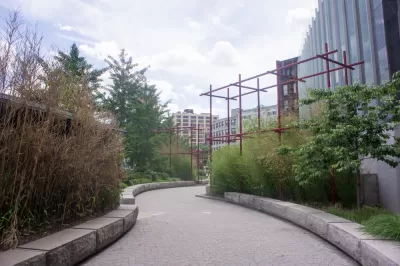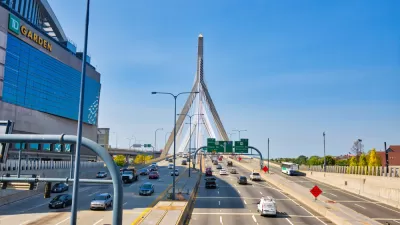Over ten years after the Big Dig finally completed construction, more and more people in Boston are willing to say the project was worth all the trouble.

"When Boston’s Rose Kennedy Greenway officially opened in October 2008, it capped decades of planning, billions of dollars in cost overruns, traffic nightmares and faulty construction known as the Big Dig," according to an article by Cameron Sperance.
Still, Sperance is able to get a chorus of local real estate experts on the record talking about the Big Dig as a dig deal for local real estate investment. In fact. "the city’s real estate community says the infamous infrastructure project is why Boston's reputation has soared to its place as a global city for development."
According to this characterization, the project was a net positive for the city.
This isn't the first time the discussion of the Big Dig has shifted toward the positive. On the tenth anniversary of the project's completion in 2015, Anthony Flint wrote about the project evaluates the project in more ambivalent terms that might have been thought possible in 2005. The the Big Dig was also considered as a model when Toronto was considering a proposal, which eventually failed, to remove the Gardiner Expressway.
FULL STORY: How The Big Dig Ushered In Boston’s Development Heyday

Study: Maui’s Plan to Convert Vacation Rentals to Long-Term Housing Could Cause Nearly $1 Billion Economic Loss
The plan would reduce visitor accommodation by 25,% resulting in 1,900 jobs lost.

North Texas Transit Leaders Tout Benefits of TOD for Growing Region
At a summit focused on transit-oriented development, policymakers discussed how North Texas’ expanded light rail system can serve as a tool for economic growth.

Why Should We Subsidize Public Transportation?
Many public transit agencies face financial stress due to rising costs, declining fare revenue, and declining subsidies. Transit advocates must provide a strong business case for increasing public transit funding.

How to Make US Trains Faster
Changes to boarding platforms and a switch to electric trains could improve U.S. passenger rail service without the added cost of high-speed rail.

Columbia’s Revitalized ‘Loop’ Is a Hub for Local Entrepreneurs
A focus on small businesses is helping a commercial corridor in Columbia, Missouri thrive.

Invasive Insect Threatens Minnesota’s Ash Forests
The Emerald Ash Borer is a rapidly spreading invasive pest threatening Minnesota’s ash trees, and homeowners are encouraged to plant diverse replacement species, avoid moving ash firewood, and monitor for signs of infestation.
Urban Design for Planners 1: Software Tools
This six-course series explores essential urban design concepts using open source software and equips planners with the tools they need to participate fully in the urban design process.
Planning for Universal Design
Learn the tools for implementing Universal Design in planning regulations.
City of Santa Clarita
Ascent Environmental
Institute for Housing and Urban Development Studies (IHS)
City of Grandview
Harvard GSD Executive Education
Toledo-Lucas County Plan Commissions
Salt Lake City
NYU Wagner Graduate School of Public Service



























